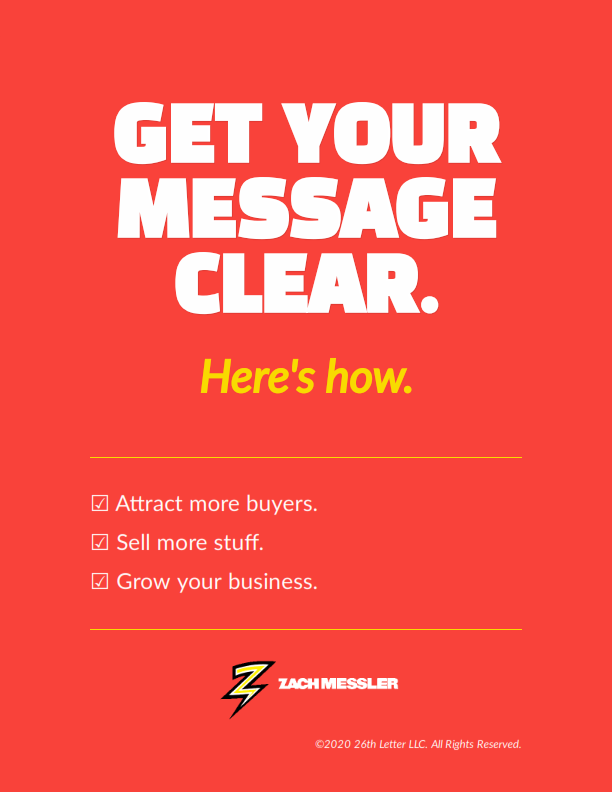Does this sound familiar?
You’re explaining what you offer. Maybe you’re nervous. You’re definitely excited.
You start talking, and then all of a sudden those nerves and excitement get the best of you. You’re on a roll! And, before you know it you can’t stop!
You’re losing your audience! The more you talk, the worse it gets. You end up confusing a point that your audience already thought they understood!
It happens to the best of us. And the worst part? It costs you credibility. And funding. And clients. (oh my!)
There’s a better way. In fact, you might call it a method!
And, if you practice this approach, you’ll find you can explain just about anything to anyone.
All it takes is answering three questions.
It’s really that simple! But…there’s a catch. (Isn’t there always a catch?)
You can ONLY answer the first two questions in the most basic way…using as few words as possible.
The third question can get more detailed…more flowery. Well….just wait, you’ll see.
This practice has helped me cut through the clutter and even successfully explain complex tech to quota-carrying, non-technical sales people…to the point where they can explain the same complexity in their own words!
So yeah…like I said, it’s simple. But…it most certainly takes practice.
Wanna explain something better? Here’s how!
Question #1: What is it?
First, define what it is you are explaining.
That’s it. Answer, “What is it?”
Write it down. (Or type it out…your choice!)
This does NOT mean you get into what it does, explain the virtues, the value, the components, or anything more that what it is. Just answer the question – what is it? Nothing more, nothing less.
When you do this for the first time, it’s hard. Your answer will use too many words. You’ll find you answer way more things than just, “What is it?”
It’s OK. Remove those words that are not precisely about what it is at the core. Your answer may be as simple as mine would be for this post:
What is it?
“A blog post about how to explain something better.“
Question #2: What does it do?
Now, write out what that thing you’re explaining does.
Do NOT explain what it is, how it works, etc. And, use as few words as possible. What does it do? Period.
Again, write it down. (Or type it out…your choice!)
Make sure your words ONLY answer the question, “What does it do?” This is not a place to get into detail. Keep your answer focused on what it does. That’s it.
For example:
What does it do?
“Helps you more easily explain anything to any audience.”
Question #3: Why does it matter?
Think about your target audience—who you are speaking with, writing for, persuading to take action, etc.”
Now, answer the question, why does it matter?
Get into everything you wanted to put in questions #1 and #2, but for the purposes of this exercise, I wouldn’t let you.
Once again, write it down. (Or type it out…your choice!)
Why should the people who should care about what you’re explaining, care?
Start your answer with context…a nod to your audience’s perspective, then get into the problem your offering addresses. Wrap it up with how your offering addresses the problem, including the outcomes delivered and value created for your audience.
The catch? Don’t get into specifics. (For example, if this is a product…forget the features.)
Think at the highest level about how this thing you’re explaining impacts anyone who would consider it.
This is how you explain something better.
The best way to explain the “Why does it matter?” section is to show you. So, here is the entire exercise, completed with this blog post as the what we’re explaining:
What it is: A blog post about improving your ability to explain things.
What it does: Helps you more easily explain anything to any audience.
Why it matters: Explaining things effectively, quickly, and easily is a learned skill, especially when it comes to anything complex.
The biggest challenge? People feel the need to get so into the details so quickly that the explanation gets too bogged down with complexity, too focused inward on the thing being explained, and often too reliant on buzzwords and jargon that add nothing other than confusion.
It ends up leaving the audience in a tizzy…overwhelmed and confused at the same time! That ain’t pretty!
But, imagine there was a way to explain anything so quickly and easily that anyone could just get it? Anyone could just repeat it? Can you envision how that would be a valuable skill?
If you can figure out a way to simply and eloquently explain not only what something is and what it does, but why it matters to any audience, your communication efforts will be more successful…no matter the audience.
Explaining stuff should be easy. I say let’s make it so.
Want help? Grab this mini workbook.
When you get it right, this exercise helps you explain your offering in a way that resonates with the very people it can help the most.
This workbook can help.








